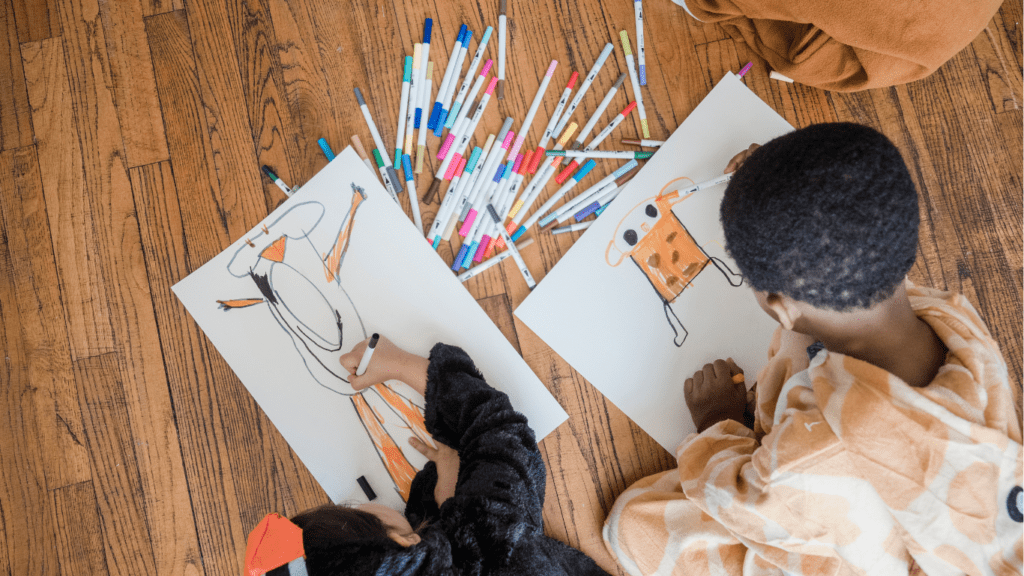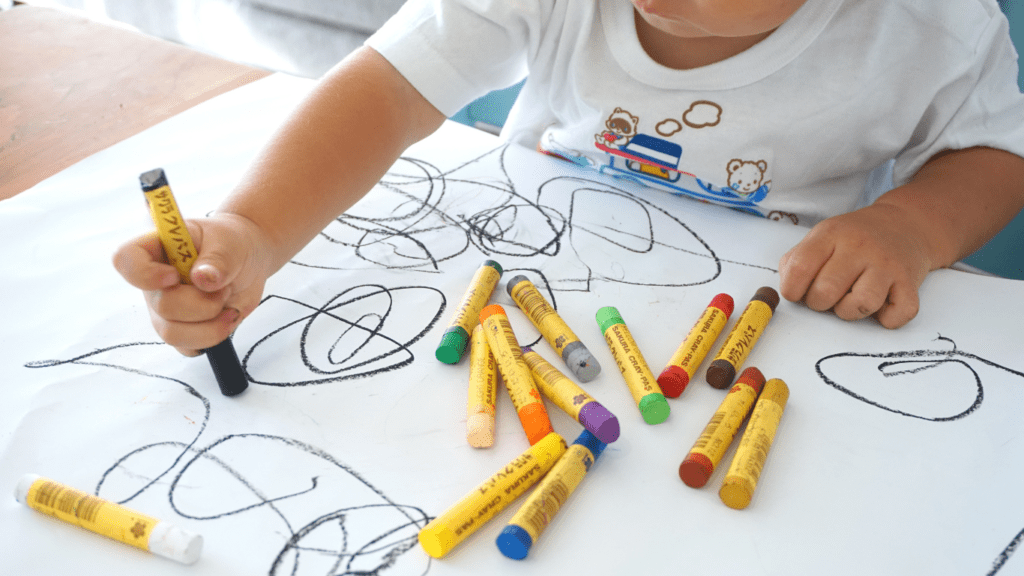Understanding Creativity and Imagination in Children
Creativity and imagination play pivotal roles in a child’s development. They fuel cognitive growth and problem-solving capabilities.
The Role of Imagination in Child Development
Imagination encourages children to think beyond the tangible. While engaging in pretend play, children experiment with different scenarios, which enhances their social and emotional skills. For example, a child pretending to be a doctor learns empathy and the importance of caring for others.
Children using their imagination in creative activities, like drawing or storytelling, develop better cognitive flexibility. They become adept at forming and switching between different ideas, which improves their ability to think divergently.
Factors That Influence Creativity
Various factors significantly influence a child’s creativity.
- A stimulating environment filled with diverse materials and experiences fosters ingenuity.
- Access to art supplies and books boosts the likelihood they’ll engage in creative activities.
- Parent and teacher behaviors also impact creativity.
- Encouraging curiosity, allowing freedom to explore, and avoiding overly structured schedules can nurture imagination. Example: children given time for unstructured play often develop more original ideas.
- Social interactions play a crucial role. Peers offering different perspectives can challenge a child’s thinking and inspire new creative paths. So, kids involved in group activities tend to show enhanced creativity and problem-solving skills.
By understanding these aspects, we can better support the creative and imaginative development of children in various environments.
Techniques to Encourage Creativity

Encouraging creativity in kids involves specific techniques that foster an imaginative mindset. Here’s how you can make it happen:
Creating an Inspiring Environment
Design vibrant spaces to stimulate creativity. Use bright colors, varied textures, and interactive elements like whiteboards and magnetic walls. Provide diverse materials such as books, puzzles, and building blocks. Ensure kids have easy access to open-ended toys that promote exploration and experimentation.
Integrating Arts and Crafts
Implement arts and crafts activities to boost creative thinking. Offer a variety of supplies: crayons, markers, clay, and fabric. Encourage kids to create freely without focusing on the outcome. Integrate art with daily lessons to make learning more engaging.
Set up a dedicated area where kids can display their artwork, boosting their confidence and inspiring further creativity.
The Importance of Unstructured Play
Allow time for unstructured play to fuel imagination. Let kids decide how to spend their free time, promoting independence. Use open-ended toys like LEGOs or blocks to foster inventive play. Encourage outdoor activities like exploring nature, which offers endless creative stimuli.
Unstructured play helps kids develop problem-solving skills and fosters innovative thinking through spontaneous activities.
Challenges in Fostering Creativity
Encouraging creativity in kids comes with its set of challenges. Here are some significant ones and ways to address them.
Overcoming Screen Time
Screen time can stifle creativity. Excessive use of TVs, tablets, and smartphones replaces time that could be spent on imaginative activities. Encourage kids to engage in screen-free activities like drawing, reading, or outdoor play.
Designate specific times for screens and stick to them. Create engaging alternatives, such as family game nights, to redirect their focus from screens to experiential learning.
Dealing with Educational Pressure
Educational pressure impacts creative expression.
- High academic expectations often push kids towards rote learning over creative thinking.
- Strive to balance academic requirements with opportunities for imaginative play.
- Include creative subjects like music or art in their daily routines.
- Provide them with a judgment-free space to explore ideas without the fear of failure.
- Celebrate their creative efforts as much as their academic achievements to promote a well-rounded growth.
Tools and Resources for Parents and Educators
Equip parents and educators with the right tools and resources to nurture creativity in kids. Explore recommended books, materials, and digital platforms designed to inspire young minds.
Recommended Books and Materials
Provide children with informative and imaginative books. Titles like “The Dot” by Peter H. Reynolds and “Beautiful Oops!” by Barney Saltzberg inspire creativity through engaging stories and illustrations.
Art supplies such as:
- colored pencils
- watercolor paints
- sketchpads
Offer limitless opportunities for artistic expression. LEGO sets and building blocks encourage inventive construction and spatial awareness. Interactive kits like “LittleBits” introduce kids to electronics while fostering creative problem-solving.
Useful Apps and Websites
Digital resources can also play a role in fostering creativity. Apps like “Toca Life: World” let kids create their own stories and worlds, promoting imaginative play. “Khan Academy Kids” offers interactive lessons that incorporate creative problem-solving activities.
Websites such as “Art for Kids Hub” provide drawing tutorials, encouraging artistic skills development. Platforms like “Scratch” introduce kids to coding, enabling them to design their own interactive stories and games.
With these resources, parents and educators can effectively support and inspire children’s creativity and imagination.

 Cynthian Holleyori is a skilled article writer who has been integral to the development of Toddler Health Roll. Her deep understanding of child health and development is evident in her well-researched and practical articles, which provide parents with essential guidance on raising healthy toddlers. Cynthian's contributions have significantly shaped the platform, ensuring that it addresses the most pressing concerns of parents and caregivers.
Beyond her expertise in toddler health and nutrition, Cynthian also delves into the mental and emotional well-being of young children. She offers valuable parenting strategies that help families foster a nurturing and supportive environment for their toddlers. Her dedication to building Toddler Health Roll has made it a trusted and comprehensive resource for parents committed to their children's growth and happiness.
Cynthian Holleyori is a skilled article writer who has been integral to the development of Toddler Health Roll. Her deep understanding of child health and development is evident in her well-researched and practical articles, which provide parents with essential guidance on raising healthy toddlers. Cynthian's contributions have significantly shaped the platform, ensuring that it addresses the most pressing concerns of parents and caregivers.
Beyond her expertise in toddler health and nutrition, Cynthian also delves into the mental and emotional well-being of young children. She offers valuable parenting strategies that help families foster a nurturing and supportive environment for their toddlers. Her dedication to building Toddler Health Roll has made it a trusted and comprehensive resource for parents committed to their children's growth and happiness.
